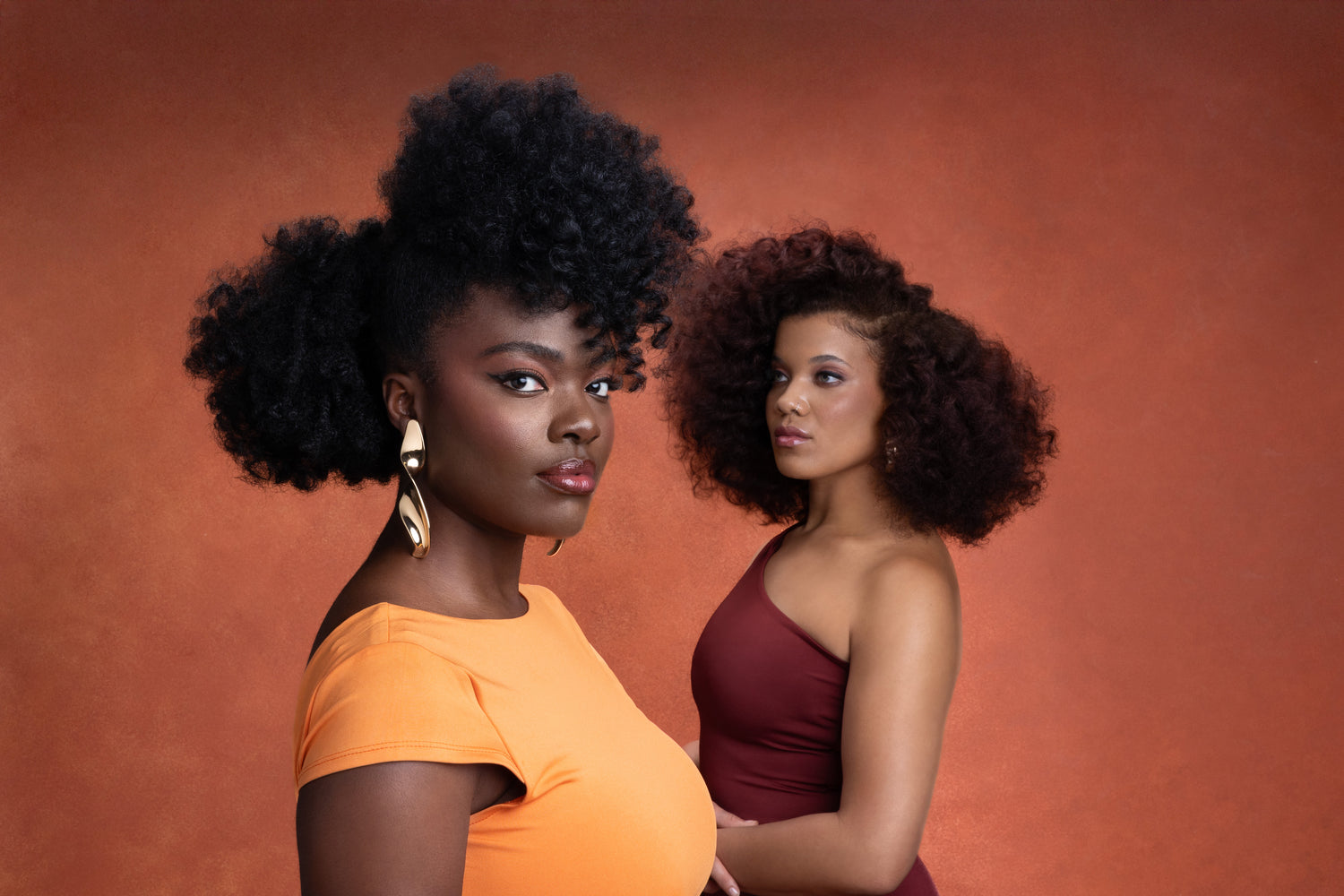Hair damage can present itself in the form of split ends, breakage, dryness and brittleness. Extremely damaged hair can arise when cracks develop in the cuticle/outer layer of the hair, and once the cuticle lifts your hair can easily get further damaged or break. Symptoms of damaged hair are dullness, and hair that's really difficult to manage.
Want to know how to repair damaged hair? We hate to tell you this but unfortunately, hair damage is permanent because hair is actually a collection of dead cells, meaning once damaged they are beyond repair. However, it doesn’t mean you should stop reading as there are ways to prevent new damage and help improve the look and feel of your h
What Are The Signs Of Damaged Hair? How Should You Treat Damaged Hair?
Here are some of the most common signs of damaged hair with tips for how you should treat damaged hair.

Tangling
Damaged hair gets easily tangled and this is because the raised cuticles that we mentioned earlier, creates friction and can easily get tangled with other strands. This can be made worse by having dry hair, so make sure your hair is moisturised by using the LOC/LCO Methods. Also, you can limit further damage by treating your hair like silk – which means detangling gently with your fingers before reaching for brushes or combs. Keeping your hair in protective hairstyles that keep the ends of your hair tucked away and safe.
Dry And Dull Hair
Damaged hair often looks lacklustre, dry and dull. You can limit further damage by reassessing your current hair care. We suggest using a sulphate-free shampoo like Swish, which gently removes build up but without drying or stripping your hair of its natural oils.
Breakage
Hair that is really brittle and easily breaks is often damaged. To help limit further damage, we would suggest looking at your diet and making sure you are getting all the things that you need for healthy hair growth. Other ways to ease existing damage is to protect your hair from the sun. Avoid/stop bleaching chemically treatments and heated styling.

Editor’s tip: Have you tried Nourish? It has been specially formulated to strengthen hair and can be used as part of your everyday hair care routine or as an intensive deep treatment to prevent damage for strong hair.
What Can Cause Damaged Hair?
Not sure what can cause damaged hair? Here we explore some of the main culprits and also provide tips to help you limit further damage.
Damaging Tools

It’s time to ditch that fine tooth comb and broken bobby pins! We want to avoid damaging our hair at all costs and these combs and poor accessories can easily cause breakage. We recommend using your fingers or curl and coil-friendly comb or brush to detangle your hair and also, have a look at your accessories – get rid of hairbands and ties with metal and plastic fastenings. And don’t use hair pins without the coated tips as these can snag and also cause damage. Trust us, your hair will thank you.
Tip: Why not treat your hair to the Afrocenchix Essentials Accessories Pack? It has everything you need to style your hair and was created with curly and coily hair in mind!
Not Handling Your Hair With Care
Before handling your hair, pause and look at your hands. You don’t want your hair to get snagged and damaged. So, it’s important to remove your rings and also inspect your nails – are they chipped or are they broken? Maybe plan a manicure the day before wash day. It can be a nice addition to your self care routine!
Dryness
When your hair is dry, it can be prone to damage and it’s particularly important that curly and coil hair types moisturise their hair. The kinks in afro hair make it harder for sebum (the natural oils your scalp produces) to travel down the hair strand. This means afro and curly hair is dryer than other types.
We know it’s easy to ‘forget’ about your hair routine, but it’s key that you maintain a simple hair routine to keep your hair looking and feeling healthy. Don’t know where to start? Don’t worry, the approach we recommend is simple: Cleanse, Moisturise, Style, Repeat. You can read our Ultimate Guide to Afro Hair Care for more advice on how to get started.
And please make sure that you’re sleeping with a protective bonnet/scarf or pillowcase.
Cotton is super absorbent, so those fibres basically rob you of all the moisture that you’ve been working on locking into your hair. So, upgrade your night routine and trade your cotton pillowcase for a satin or silk one. Or if you don’t want to mess up your bedroom decor, just wear a satin or silk bonnet or headscarf. This will help you retain moisture and reduce friction on your hair.
Tip: Lock in moisture with the Afrocenchix Moisture Surge Set, which has everything you need to keep your hair moisturised.
Heat Damage
Heat damage is caused by using excessive heat/heated styling tools on your hair and can make your hair feel and look dry, thin, rough, brittle and dull. You may notice you have increased hair breakage, while your ends may be split and broken with white bits showing at the ends. Heat damaged hair can even become discoloured (especially if you have dyed or bleached hair) and notice more tangles and knots (even on a hair strand).
Chemical Treatments
Chemical treatments such as bleaching, relaxing, perming or straightening can cause hair damage. This is because the chemicals work by breaking down your hair to alter its shape or penetrating the cuticle to remove colour. If you think that chemical treatments could be the root of your hair damage, we would suggest reducing or avoiding treatments to give your hair a bit of TLC. Again, moisture is key, so reevaluate your hair care and use the LCO/LOC method to lock in moisture.
The truth is that we can't turn back time and undo the damage, but you can change your hair habits going forward to make sure that your hair doesn't get further damaged and gets all the TLC it needs and deserves.
More Articles:
12 Ways to Make Transitioning to Natural Hair Easier

